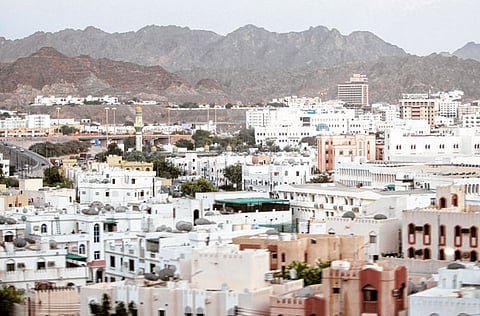Oman’s affordable housing needs instant solution
One would be to go in for enhanced ties between private and public sectors

A generic definition is that affordable housing is reasonable quality accommodation that can be afforded by those with median incomes, and which does not dent a household’s ability to meet other basic needs. A rule of thumb to gauge is that accommodation expenditure should not exceed 30 per cent of a household’s gross income.
According to figures from the National Centre for Statistics & Information, Oman’s population has grown from 1.4 million in 1985 to 3.6 million at present, while the UN projects it will increase to 5 million by 2030. Although the primary growth driver has been an increase in the size of the expatriate workforce, the population of Omani nationals has doubled from 1.1 million to 2.1 million since 1985, with over two-thirds under 30 years.
This has translated into a sharp upturn in demand for affordable housing. Following recent budget increases, the Ministry of Housing is addressing the issue through the provision of social housing, housing grants and loans. It has thus far:
• Allocated an average of 425 social housing units per year between 2008 and 2012;
• Provided 4,800 housing assistance grants for individuals to construct properties at an average value of $55,000 per grant, during 2012 (in comparison to 228 grants in 2008); and
• Provided 1,400 housing loans for individuals to construct properties at an average value of $50,000 per grant, during 2012 (in comparison to 111 loans in 2009).
According to the ‘Facts about Omani households’ report released recently, average monthly Omani household income has risen from $1,660 in 2000 to $3,050 in 2011, but this needs to be set against an average household size of 7.5 people (which has decreased from an average of nine people per household in 2003).
Recent government efforts to address unemployment among Omani nationals, coupled with significant increases in minimum salaries, have helped to underpin sharp growth in the average incomes of Omani households. Despite this, government stats indicates salaries for Omani nationals are generally limited with few individuals earning in excess of $2,500 per month.
The report also states that home ownership among Omani households has risen to 83 per cent within the Sultanate, underscoring the strong desire from the native population to own, rather than rent, their homes. Furthermore, Cluttons has experienced strong demand for Omani nationals to live in detached villas rather than more efficient apartments or townhouses, mirroring trends recorded elsewhere in the Gulf. Unlike markets in Europe and North America, there is no evident “property ladder”.
By relating median monthly incomes to mortgage/loan interest terms, we calculate affordable housing equates to property values of $78,000-156,000 with “truly affordable” housing being in the region of $78,000-104,000.
Home loans
The government-owned Oman Housing Bank provides home loans to lower income Omani citizens with the average subsidised loan being around $78,000, while the average non-subsidised loan is $104,000, reflecting higher property prices in the Sultanate’s capital. In contrast, we would calculate the average cost for purchasing a 600 square metre plot and constructing a 300 square metre villa on the outskirts of the Muscat capital as being in excess of $130,000, underscoring the mismatch between desire and affordability for lower income households.
The Government is, however, addressing the housing needs of those citizens on the lowest incomes, while those with below median income levels are still unable to qualify for even what is currently classed as truly affordable housing, creating an opportunity for the private sector to capitalise on an untapped segment.
That said, the lack of incentives for private developers, coupled with the lack of a formal national affordable housing strategy means that developers are not keen to take the plunge into a rather grey area. This is further exacerbated by the desire of Omani nationals to live in larger villas, on individual plots, rather than more cost-effective, affordable homes.
Without public sector intervention, it is our view that the participation of the private sector in the national affordable housing building programme remains unviable; however, we expect this to be addressed in the medium term.
Potential solutions include investigating ‘Public Private Partnerships’ between private sector developers and relevant government authorities, increased access to mortgage and favourable interest rates, use of efficient building technology/systems to contain costs and quality allied to innovative design and planning, and successfully addressing purchaser expectations relative to the type of property that they can actually afford.
While, the provision of affordable housing citizens is clearly an urgent issue, there is a clear opportunity for engaging the private sector to solve the Sultanate’s looming crunch. Greater public sector involvement will no doubt emerge as the key to the successful provision of affordable housing by the private sector, which will help to cater to the needs of the less affluent Omani population.
— The writer is the regional head at the property services consultancy Cluttons Middle East.
Sign up for the Daily Briefing
Get the latest news and updates straight to your inbox



